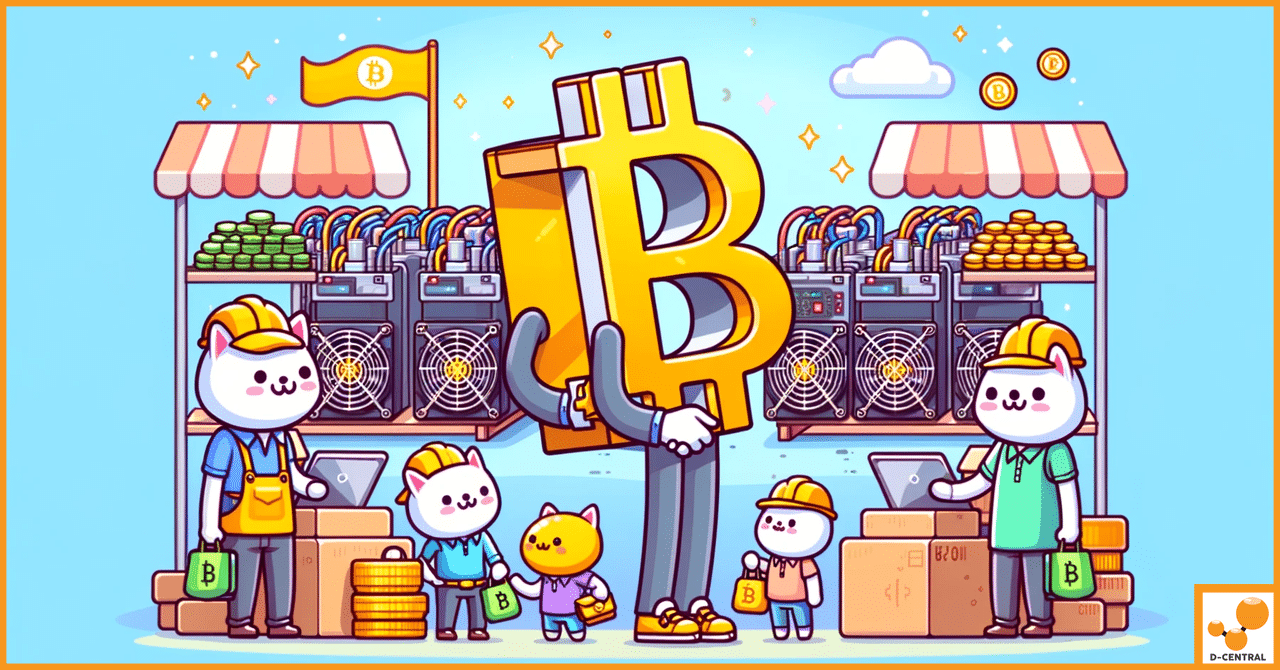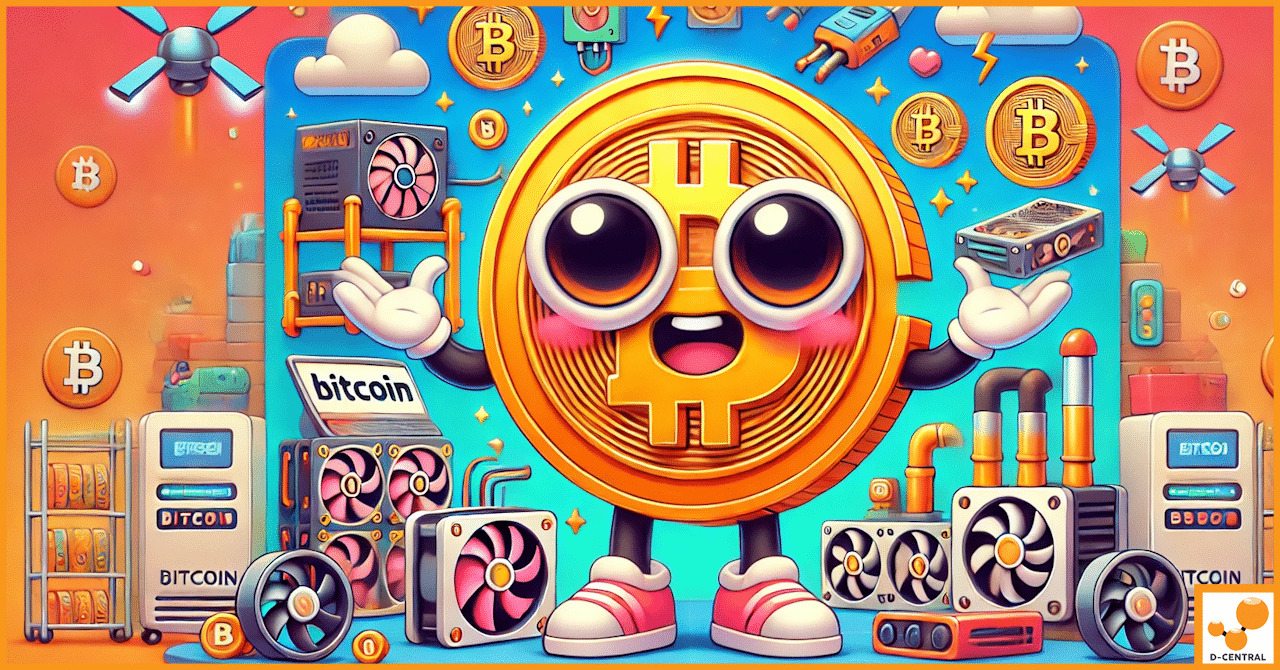
The Transformative Power of Bitcoin in E-commerce
In the ever-evolving landscape of digital commerce, the emergence of Bitcoin stands as a pivotal milestone, heralding a new era
4479 Desserte Nord Autoroute 440, Laval, QC H7P 6E2

Bitcoin, the first and most well-known cryptocurrency, emerged in 2009 as a revolutionary digital currency that operates independently of a central authority. Its creation marked the beginning of a new era in finance, introducing the world to the possibilities of blockchain technology—a decentralized ledger that records all transactions across a network of computers. In the digital age, Bitcoin has become synonymous with financial innovation, offering a form of money that is not only global and digital but also secure and transparent. Its rise to prominence has sparked a wave of interest in cryptocurrencies, leading to the development of thousands of other digital currencies and tokens, each with unique features and purposes.
Introduction to the Concept of Cryptocurrency Mining and Its Role in Maintaining the Blockchain
Cryptocurrency mining is the backbone of the Bitcoin network and many other blockchain-based cryptocurrencies. It involves the process of validating transactions and adding them to the blockchain ledger. Miners use powerful computers to solve complex mathematical puzzles, a task that requires significant computational power and energy. The first miner to solve the puzzle gets the right to add a new block of transactions to the blockchain and, in return, receives a reward in the form of newly minted bitcoins. This process not only generates new bitcoins, simulating a form of digital “gold mining,” but also secures the network against fraudulent transactions and ensures its integrity and trustworthiness.
Definition of Mining Pools and the Central Thesis of the Article: The Mining Pool Paradox
As the Bitcoin network grew, so did the difficulty of the mathematical puzzles, making it increasingly challenging for individual miners to solve a block and earn rewards. This led to the creation of mining pools—groups of miners who combine their computational resources to increase their chances of solving a block and earning rewards. The rewards are then distributed among the pool members according to their contributed computational power. While mining pools offer individual miners the opportunity to receive more consistent payouts, they also introduce a paradox that lies at the heart of this article: the mining pool paradox.
The mining pool paradox encapsulates the delicate balance between the collective benefit of increased chances of earning rewards through pooled resources and the individual miner’s reduced payout due to shared rewards. Furthermore, it highlights concerns about the centralization of mining power, which could potentially undermine the decentralized ethos of Bitcoin and other cryptocurrencies. This article aims to delve into the complexities and trade-offs involved in participating in mining pools, offering insights and guidance for navigating the treacherous terrain in the quest for Bitcoin supremacy.
Cryptocurrency mining is a fundamental process that not only facilitates the creation of new coins but also secures the network and validates transactions. This section explores the intricacies of how cryptocurrency mining works, its critical role in the blockchain ecosystem, and the challenges faced by individual miners.
At its core, cryptocurrency mining involves solving complex cryptographic puzzles to validate transactions and add them to the blockchain, a public ledger. When a transaction is made, it is grouped with others into a block. Miners then compete to validate these transactions by solving a cryptographic puzzle, often referred to as proof of work (PoW). The first miner to solve the puzzle is granted the right to add the new block to the blockchain and is rewarded with a specific amount of cryptocurrency, such as Bitcoin.
This process requires significant computational power, as the puzzles become increasingly difficult to solve over time. Miners use specialized hardware, including GPUs (Graphics Processing Units) and ASICs (Application-Specific Integrated Circuits), designed to handle the demands of mining efficiently.
Mining serves several vital functions within the blockchain ecosystem:
While mining can be lucrative, individual miners face several significant challenges:
In summary, cryptocurrency mining is a complex and resource-intensive process that plays a crucial role in maintaining and securing blockchain networks. Despite its importance, individual miners must contend with significant challenges, including high costs, energy consumption, and increasing difficulty, all of which influence their ability to profit from mining activities.
The landscape of cryptocurrency mining has evolved significantly since the inception of Bitcoin in 2009. As the network grew, so did the difficulty of mining, leading to the creation of mining pools. This section delves into the historical context behind the emergence of mining pools, their definition and operation, and the benefits they offer to individual miners.
In the early days of Bitcoin, mining was feasible on regular desktop computers. Miners could solve the cryptographic puzzles and earn block rewards with relatively modest hardware. However, as more people joined the network and the built-in difficulty adjustment mechanism increased the complexity of puzzles, the probability of successfully mining a block as an individual miner diminished significantly.
This escalation in difficulty meant that solo miners faced long periods without earning any rewards, making mining less sustainable and more unpredictable for individuals. The situation necessitated a solution that would allow miners to work together and share rewards, leading to the creation of mining pools.
A mining pool is a group of cryptocurrency miners who combine their computational resources over a network to increase their chances of finding a block or solving a cryptographic puzzle. When the pool successfully mines a block, the reward is distributed among its members according to the amount of computational power each contributed, minus a fee that goes to the pool operator for maintaining the pool’s operations.
The basic operation of a mining pool involves miners connecting their mining hardware to the pool’s server, which coordinates the pool’s efforts. The pool server breaks down the block-finding task into smaller pieces that are distributed to individual miners. This approach allows the pool to work on solving a block concurrently, significantly increasing the collective hash rate and, consequently, the chances of finding a block.
Joining a mining pool offers several advantages to individual miners, making it an attractive option for many:
In summary, the emergence of mining pools has significantly impacted the cryptocurrency mining landscape, offering individual miners a way to remain competitive and earn consistent rewards despite the increasing difficulty of mining activities. By pooling resources, miners can enjoy the benefits of steady income, reduced variance, and a lower barrier to entry, making mining more accessible and sustainable for a broader audience.
Joining a mining pool is a strategic move for many cryptocurrency miners, offering several advantages over solo mining. The collective effort not only enhances the chances of success but also brings a range of benefits, from consistent payouts to a supportive community. Here, we explore the key benefits of participating in a mining pool.
One of the most significant advantages of joining a mining pool is the ability to receive more consistent payouts. Solo miners face high variance; they might go extended periods without earning any rewards due to the competitive nature of mining and the sheer amount of computational power required to solve a block. However, by joining a pool, miners combine their computational resources, increasing the pool’s overall hash rate and, consequently, its chances of solving blocks more frequently.
This collective effort leads to more regular rewards, which are then distributed among pool members based on the amount of work each contributed. Although the individual share of each block reward is smaller than what a solo miner would receive for solving a block on their own, the frequency of payouts in a pool setting offers a steadier income stream, making mining endeavors more predictable and financially manageable.
Mining pools capitalize on the principle of collective power. By pooling resources, miners can achieve a higher combined hash rate, significantly enhancing the pool’s ability to compete in the network and successfully mine blocks. This increased efficiency is not just about speed; it’s also about energy and cost-effectiveness.
Individual miners often struggle to keep up with the electricity and maintenance costs associated with running high-powered mining rigs. In a mining pool, the shared effort means that miners can contribute according to their capacity, reducing the pressure on individual resources while still partaking in the rewards. This collaborative approach allows for a more efficient allocation of resources across the network, making mining more accessible and sustainable for participants.
Beyond the financial and technical benefits, joining a mining pool offers the invaluable advantage of community. Mining, particularly for newcomers, can be a complex and daunting endeavor. Mining pools often provide forums, chat groups, and support channels where members can exchange information, seek advice, troubleshoot issues, and share strategies. This community aspect fosters a sense of belonging and support, making the mining journey less isolating.
Moreover, many mining pools offer educational resources and guidance, helping members optimize their setups and understand the nuances of the cryptocurrency market. This collective knowledge base is a powerful tool, enabling miners to make informed decisions and stay updated on the latest trends and developments in the crypto space.
The decision to join a mining pool is driven by a combination of factors that go beyond mere profitability. While consistent payouts and increased efficiency are compelling financial incentives, the community and support offered by mining pools provide additional value that enriches the mining experience. Together, these benefits make mining pools an attractive option for individuals looking to navigate the complexities of cryptocurrency mining, offering a pathway to success that balances the pursuit of rewards with the realities of competition and collaboration in the digital age.
While mining pools offer numerous advantages to individual miners, they are not without their drawbacks. These disadvantages primarily revolve around concerns of centralization, trust and security issues, and the financial implications of fees and profit sharing. Understanding these drawbacks is crucial for miners considering joining a mining pool.
One of the foundational principles of Bitcoin and many other cryptocurrencies is decentralization — the idea that no single entity should have control over the network. However, mining pools, by their very nature, concentrate hashing power under the control of the pool operators, which can lead to a form of centralization. This concentration of power is concerning because it potentially undermines the security and integrity of the blockchain. If a single pool or a coalition of pools were to amass more than 50% of the network’s total hashing power, they could theoretically execute a 51% attack, allowing them to double-spend coins, prevent certain transactions from being confirmed, or even halt payments between some or all users.
Joining a mining pool requires miners to place a significant amount of trust in the pool operators. This trust extends to the proper management of the pool’s infrastructure, fair calculation and distribution of rewards, and the overall security of the pool against external attacks. Unfortunately, the cryptocurrency space is not immune to fraud and mismanagement. There have been instances where pool operators have been dishonest, misappropriating funds, or failing to distribute rewards equitably. Additionally, the concentration of many miners’ efforts into a single pool can make it a more attractive target for hackers, potentially compromising the security of miners’ earnings.
Mining pools charge fees to cover the costs associated with maintaining the pool’s infrastructure and services. These fees can vary significantly from one pool to another and are typically deducted from the miners’ rewards. While fees are a necessary part of pool operations, they also reduce the individual miner’s net profit. Furthermore, the method by which rewards are calculated and distributed among pool members can vary, with different pools employing different systems such as Pay-Per-Share, Proportional, or PPLNS (Pay Per Last N Shares). Each of these systems has its own set of advantages and disadvantages, affecting how rewards are shared and, consequently, the profitability for individual miners. Understanding these fee structures and reward distribution mechanisms is crucial for miners to ensure they are making the most informed decision when choosing a pool.
Mining pools play a critical role in the cryptocurrency mining ecosystem, offering individual miners the chance to earn more consistent rewards. However, the drawbacks associated with mining pools, including concerns over centralization, trust and security risks, and the financial implications of fees and profit sharing, cannot be overlooked. Miners must weigh these disadvantages against the benefits of joining a pool, considering their own priorities and risk tolerance. Ultimately, the decision to join a mining pool should be made with a full understanding of both the potential rewards and the inherent risks.
The concept of mining pools in the cryptocurrency world introduces a complex paradox that miners must navigate. This paradox lies in the balance between the increased chances of earning rewards through pooled efforts and the potential downsides of centralization and reduced individual payouts. This section delves into the mining pool paradox, examining its implications for the Bitcoin network and the trade-offs miners face in their quest for Bitcoin supremacy.
At the heart of the mining pool paradox is the trade-off between the benefits of joining forces with other miners and the potential drawbacks that such collaboration brings. On one side, mining pools significantly increase an individual miner’s chances of earning rewards. By pooling computational resources, miners can solve blocks more frequently than they would on their own, leading to more consistent and predictable rewards. This collaborative approach democratizes mining to some extent, allowing even those with limited resources to participate and earn a share of the rewards.
However, this increased probability of earning rewards comes with its own set of challenges. The aggregation of mining power within pools can lead to a form of centralization, where a few large pools control a significant portion of the network’s total hash rate. This concentration of power is at odds with the decentralized ethos of Bitcoin and poses potential risks to the network’s security. Furthermore, while pooled mining offers more consistent rewards, the individual payouts are smaller since the rewards are distributed among all pool members. This reduction in individual payouts can diminish the profitability of mining for some participants, especially when pool fees are taken into account.
The rise of mining pools has profound implications for the Bitcoin network and its underlying security model. On one hand, mining pools contribute to the network’s overall hash rate, bolstering its resistance to attacks and enhancing the security of the blockchain. A higher collective hash rate makes it more difficult for malicious actors to mount a 51% attack, where they could potentially reverse transactions or double-spend coins.
On the other hand, the centralization of hash power within a few large pools introduces vulnerabilities. If one or more pools were to combine forces and control more than 50% of the network’s hash rate, they could theoretically compromise the network’s integrity. Although such attacks are costly and challenging to execute, the mere possibility raises concerns about the concentration of mining power and its implications for decentralization and security.
Miners seeking to maximize their rewards and contribute to the Bitcoin network must carefully consider the trade-offs presented by the mining pool paradox. The decision to join a mining pool is not merely a matter of increasing the likelihood of earning rewards; it also involves weighing the potential impact on the network’s decentralization and security.
Miners must evaluate the size and policies of different pools, considering factors such as fee structures, reward distribution mechanisms, and the pool’s approach to governance and transparency. Additionally, miners should be mindful of the broader implications of their choices, including the potential for centralization and the ethical considerations of supporting pools that prioritize the network’s health and security.
The mining pool paradox encapsulates the complex dynamics at play in the cryptocurrency mining landscape. Miners are tasked with balancing their desire for consistent rewards with the need to uphold the principles of decentralization and security that underpin the Bitcoin network. Navigating this paradox requires a nuanced understanding of both the benefits and drawbacks of pooled mining, as well as a commitment to making informed decisions that align with the long-term interests of the Bitcoin ecosystem.
Choosing the right mining pool is a critical decision for any miner. It involves balancing various factors, from the pool’s reputation and fee structure to its size and governance. This section outlines strategies for navigating these complexities, helping miners select a pool that aligns with their goals and values.
The reputation of a mining pool is paramount. A pool with a solid reputation is likely to be more reliable and fair to its members. Look for pools that have been around for a while, as longevity can be a sign of stability and trustworthiness. Additionally, consider pools that actively communicate with their members and the broader community, as this openness can be a good sign of their commitment to fairness and transparency.
Understanding the fee structure and payout model of a mining pool is crucial. Pools may charge a percentage of your earnings as a fee for their services, which can vary significantly from one pool to another. Additionally, pools use different payout models, such as Pay-Per-Share (PPS), Pay-Per-Last-N-Shares (PPLNS), or others. Each model has its advantages and disadvantages, affecting your potential earnings. Choose a pool whose fee structure and payout model align with your mining goals and risk tolerance.
The size of a mining pool, indicated by its total hash rate, affects your chances of earning rewards. Larger pools with more collective hash power may offer more regular payouts, but the rewards will be smaller and split among more members. Conversely, smaller pools offer larger payouts per block but with less frequency. Consider your preference for payout frequency and size when choosing between large and small pools.
Mining pool governance — how decisions are made within the pool — can significantly impact miners. Some pools operate democratically, allowing miners to vote on important decisions, such as which blockchain versions to support during forks. Others may be more centralized, with the pool operator making unilateral decisions. The governance model can affect everything from the pool’s technological direction to how rewards are distributed. Therefore, choose a pool whose governance structure you’re comfortable with, ensuring it aligns with your views on decentralization and participation in the mining community.
Navigating the complexities of mining pools requires careful consideration of various factors, including the pool’s reputation, fee structure, size, and governance. By thoroughly researching and evaluating these aspects, miners can make informed decisions, selecting a pool that not only maximizes their potential rewards but also aligns with their principles and goals in the broader cryptocurrency ecosystem.
The journey through the complexities of cryptocurrency mining, particularly within the context of Bitcoin, reveals a landscape filled with both opportunities and challenges. Central to this exploration is the mining pool paradox, a phenomenon that underscores the delicate balance between collective effort and individual gain, between the quest for efficiency and the ideals of decentralization.
The mining pool paradox presents a nuanced dilemma: joining a mining pool increases an individual’s chances of earning rewards through pooled computational power, yet it also introduces potential risks related to centralization, reduced individual payouts, and the reliance on the trustworthiness of pool operators. This paradox not only affects miners’ profitability but also touches on broader concerns about the security and integrity of the Bitcoin network. As miners navigate this landscape, they must weigh the benefits of consistent, albeit smaller, rewards against the ideals of a decentralized, secure network.
Looking ahead, the future of Bitcoin mining and the role of mining pools within it appear poised for evolution. Technological advancements, regulatory changes, and shifts in the cryptocurrency market will undoubtedly influence the dynamics of mining. As the Bitcoin network grows and matures, the mining community will likely see innovations aimed at addressing the challenges of scalability, energy consumption, and centralization.
Mining pools, despite the paradox they embody, will continue to play a significant role in this ecosystem. They offer a practical solution for individual miners to remain competitive and profitable. However, the emergence of decentralized mining pools and other alternative mining strategies suggests a future where the mining landscape becomes more diversified and aligned with the foundational principles of decentralization and security.
The quest for Bitcoin supremacy, therefore, is not just a matter of technological prowess or financial gain. It is also a reflection of the community’s values and its commitment to the principles that have made Bitcoin a groundbreaking innovation in the digital age. As the mining community navigates the complexities of mining pools and the paradoxes they present, the collective choices made will shape not only the future of Bitcoin mining but also the very essence of the Bitcoin network itself.
In conclusion, the mining pool paradox and the broader challenges of cryptocurrency mining invite ongoing dialogue and innovation. By engaging with these complexities thoughtfully and proactively, the mining community can contribute to a future where Bitcoin not only achieves supremacy in the digital currency landscape but does so in a way that remains true to its decentralized, secure, and open-source roots.
DISCLAIMER: D-Central Technologies and its associated content, including this blog, do not serve as financial advisors or official investment advisors. The insights and opinions shared here or by any guests featured in our content are provided purely for informational and educational purposes. Such communications should not be interpreted as financial, investment, legal, tax, or any form of specific advice. We are committed to advancing the knowledge and understanding of Bitcoin and its potential impact on society. However, we urge our community to proceed with caution and informed judgment in all related endeavors.
Related Posts

In the ever-evolving landscape of digital commerce, the emergence of Bitcoin stands as a pivotal milestone, heralding a new era

Bitcoin mining stands as the cornerstone of the Bitcoin network, ensuring security, functionality, and the continuous addition of new bitcoins

Discover how cutting-edge mining hardware can transform your operations, increase profitability, and optimize energy usage in the ever-evolving world of